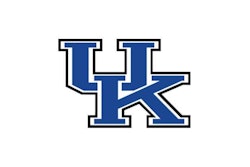One coach's alcohol policy backfires, prompting more questions than answers
Cedarburg (Wis.) High School varsity boys' basketball coach Ben Siebert became immersed in a sea of controversy after his zero-tolerance alcohol-use policy - one stricter than the school's disciplinary code - forced the removal of several players from the team following a three-day tournament last December. Fanning the flames, the Cedarburg School Board fired Siebert in June, though it issued a statement denying that the decision was "disciplinary, punitive or intended to reflect negatively" on him.
But reflect negatively it has - on the coach, the school and the district. In the six months that followed the board's action, an outraged community demanded answers it wasn't receiving to questions about why the board held a four-hour closed meeting before relieving Siebert of his duties; the Cedarburg Education Association, on behalf of Siebert (who's also a math teacher at CHS) filed a complaint with the Wisconsin Employment Relations Commission demanding he be reinstated as coach; local citizen groups organized petition drives that led to a Nov. 2 recall election that removed the school board's president and vice president; and the district revamped its disciplinary code, which is now based on a point-accumulation system.
While other unreported factors certainly seem to have been at play in Siebert's unusual dismissal, it's fair to question whether the issue would have gotten this far out of control had the coach's zero-tolerance policy, which sparked the initial controversy, not been in effect in the first place.
"One of the tactical advantages of a zero tolerance policy, and one of the reasons a lot of coaches like it, is that at the front end it seems like a powerful deterrent," says Jim Thompson, executive director of the Positive Coaching Alliance, a Stanford University- based organization that seeks to change the culture of youth sports by teaching life lessons through positive coaching. "But in general, zero-tolerance policies don't really give enough flexibility to deal with a lot of different situations."
Instead of "hard and fast rules," as he calls them, Thompson suggests threatening to suspend players for a certain number of games or limiting their playing time for an extended period. "I've found that if you want to shape a player's behavior, threatening to take away playing time is a great way to do it," says Thompson, who has coached high school basketball and youth basketball and baseball. "If we consider sports as part of the educational process for kids, then kicking kids out of sports isn't necessarily a good way to educate them."
That said, the National Federation of State High School Associations offers a zero-tolerance policy in its coaches' education programs as one of many methods that can be used to control student-athletes' behavior. But it's a risky proposition, admits Tim Flannery, the NFHS assistant director who oversees the federation's training efforts. "One of the things we get concerned about with zero-tolerance policies is that the violations usually go further underground, because it's sort of like the death penalty: If you're caught, you're thrown off the team," Flannery says. "Well, guess what? That doesn't prevent kids from drinking; it just means that they're going to be much more careful and take drastic measures to not get caught. Zero-tolerance polices in and of themselves are not good or bad. It's really about how they are implemented."
If a coach opts to have a zero-tolerance policy regarding certain behaviors, he or she must clearly convey that policy to players and their parents prior to the start of the season, Flannery says. And consistency in carrying out that policy is vital. "Kids are real sensitive to that," he says. "If there's a rule and someone violates it, everyone should expect that person to suffer the consequences of violating the rule. Otherwise, the opportunity for kids to learn something positive from the situation is lost."
Instead of a zero-tolerance policy, one New York school boasts an Athletic Fairness Committee - a council of administrators, parents and student-athletes that assesses a player's violation (minor violations range from property damage to drug or alcohol use) and determines the proper punishment. The student-athlete is offered the opportunity to explain his or her actions to the committee, which then discusses the situation before handing down its verdict. Past punishments have included athletic ineligibility, game suspensions, community service and mandatory counseling.
It should be reemphasized that in the wake of the Siebert incident, the Cedarburg School District recently revised its extracurricular activities code. In the past, any student- athlete (save members of the boys' varsity basketball team, who were held to Siebert's zero-tolerance policy) caught in a first-time alcohol-use violation was suspended for one game or competition - not kicked off the team. "I set high standards for the student-athletes on my team," Siebert said in a statement presented to the school board, defending his policy.
Under the new point-accumulation code, CHS students receive points for every violation. Once an individual's score reaches nine, he or she loses eligibility to participate in extracurricular activities for one calendar year. Possession of alcohol or any form of tobacco, for example, results in four points if the student immediately admits the misconduct when confronted with evidence of wrongdoing. Dishonesty costs the offender an extra two points. Once a student accumulates five points, that person will be suspended for 33 percent of the scheduled competitions and other extracurricular activities in which he or she is involved. Points accumulate throughout a student's high school career, with an incentive that removes one point from the record for each violation-free year.
Additionally, coaches will no longer be allowed to impose penalties for misconduct under separate team contracts that are stricter than those provided under the district's code.
Regardless of the behavior codes enacted for student-athletes, zero-tolerance policies still have their place, Thompson and Flannery contend. "The reality is, certain things that are illegal or dangerous should be part of a zero-tolerance policy," says Flannery, who recommends that coaches take a positive approach when explaining their rationale for such a policy, rather than accentuate its negative aspects. For example, he suggests explaining that particular activities can be harmful to the health and well-being of players, as well as detrimental to the success of their team. "Help them make wise choices, so that if they are at a party where illegal activities are being conducted, they can refuse to participate in the name of the team," Flannery says. "Tell them to say, 'Look, I can't do that. I'm training, and it's against our rules.' Our best coaches teach kids to do that."
































